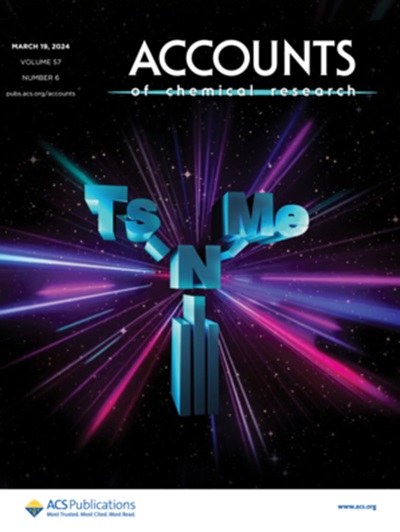催化解聚的种群平衡模型:从初级步骤到多相反应器。
IF 17.7
1区 化学
Q1 CHEMISTRY, MULTIDISCIPLINARY
引用次数: 0
摘要
塑料垃圾在垃圾填埋场和环境中的持续积累正在推动对化学过程和催化剂的研究,以回收聚合物。传统的建模策略不适用于这些过程,因为它们涉及太多的反应物和中间体,每个分子量和每个功能化都有一个。为了模拟动力学,我们开发了人口平衡模型(PBMs),该模型考虑了散装中的大分子反应物和大分子催化中间体。这些PBMs通过聚合物吸附和解吸模型以及小分子产物和共反应物(如氢或乙烯)的传统速率方程相互耦合。这些模型与实验数据相结合,被用于许多方面:(i)测试机制假设,(ii)提取速率参数,(iii)定量比较催化剂活性,(iv)解释两相反应器中的传质和汽液分配,以及(v)设计新的支持结构和催化剂,模拟天然解聚酶的过程作用。一些关键的理论进展允许从基本速率和机制构建pbm,而不是使用伪基本速率参数作为拟合参数的传统公式。我们讨论了从第一性原理计算中“自下而上”构建这些模型的方法,以及从“自上而下”分析速率数据中提取模型参数的方法。该组合提供了第一性原理计算和聚合物升级循环等复杂大分子转化动力学之间的定量桥梁。本文章由计算机程序翻译,如有差异,请以英文原文为准。
Population Balance Models for Catalytic Depolymerization: From Elementary Steps to Multiphase Reactors.
ConspectusThe ongoing accumulation of plastic waste in landfills and in the environment is driving research on chemical processes and catalysts to recycle polymers. Traditional modeling strategies are not applicable to these processes because they involve too many reactants and intermediates, one for each molecular weight and each functionalization. To model the kinetics, we have developed population balance models (PBMs) that account for macromolecular reactants in the bulk and macromolecular catalytic intermediates. These PBMs couple to each other through polymer adsorption and desorption models and to traditional rate equations for small molecule products and co-reactants (like hydrogen or ethylene). The models, in combination with experimental data, are being used in many ways: (i) to test mechanistic hypotheses, (ii) to extract rate parameters, (iii) to quantitatively compare catalyst activities, (iv) to account for mass transfer and vapor-liquid partitioning in two-phase reactors, and (v) to design novel support architectures and catalysts that mimic the processive action of natural depolymerization enzymes. Some key theoretical advances allow PBMs to be constructed from elementary rates and mechanisms, as opposed to traditional formulations with pseudoelementary rate parameters invoked as fitting parameters. We discuss ways to build these models "bottom-up" from first-principles calculations and ways to extract model parameters from "top down" analyses of rate data. The combination provides a quantitative bridge between first-principles calculations and the kinetics of complex macromolecular transformations for polymer upcycling and beyond.
求助全文
通过发布文献求助,成功后即可免费获取论文全文。
去求助
来源期刊

Accounts of Chemical Research
化学-化学综合
CiteScore
31.40
自引率
1.10%
发文量
312
审稿时长
2 months
期刊介绍:
Accounts of Chemical Research presents short, concise and critical articles offering easy-to-read overviews of basic research and applications in all areas of chemistry and biochemistry. These short reviews focus on research from the author’s own laboratory and are designed to teach the reader about a research project. In addition, Accounts of Chemical Research publishes commentaries that give an informed opinion on a current research problem. Special Issues online are devoted to a single topic of unusual activity and significance.
Accounts of Chemical Research replaces the traditional article abstract with an article "Conspectus." These entries synopsize the research affording the reader a closer look at the content and significance of an article. Through this provision of a more detailed description of the article contents, the Conspectus enhances the article's discoverability by search engines and the exposure for the research.
 求助内容:
求助内容: 应助结果提醒方式:
应助结果提醒方式:


